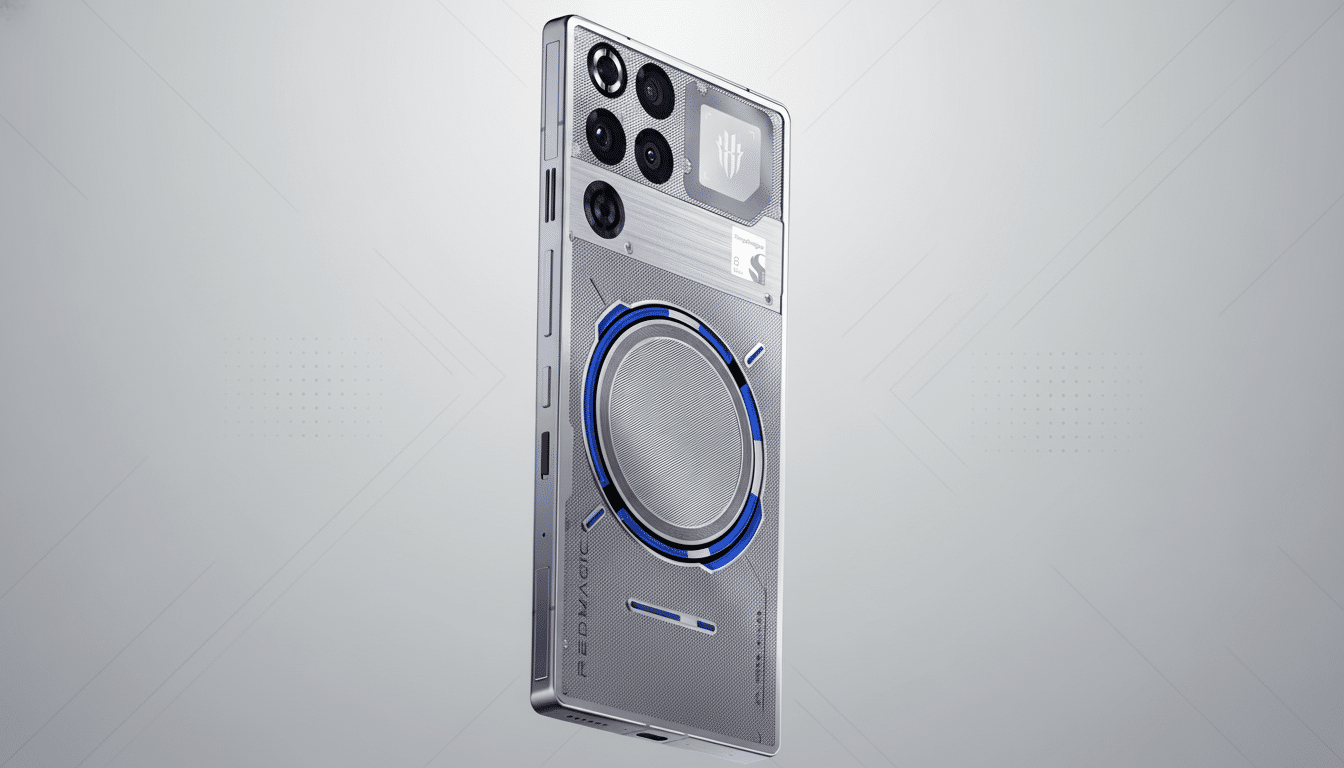A new teardown has taken the wraps off the RedMagic 11 Pro — and there’s nothing about this that you’d expect in a typical smartphone. Zack Nelson of JerryRigEverything ripped open an end-to-end liquid loop, exposed a turquoise fluid through its tube, and revealed a pump the size of a thumbnail orchestrating it all — turning the gaming phone into a pocket-size thermal lab.
What the teardown reveals about the cooling design
On transparent models, the RedMagic 11 Pro already allows you to glimpse a circular window through which the coolant flows. Take off the rear glass, as Nelson did, and the whole loop is laid bare: sinuous tubing traipsing across the back; an air duct in something like a twisted bow-tie configuration with only one wing, connected to the internal fan; and a ceramic micropump that shakes like a speaker in order to drive liquid through it all.

The blue coolant does not simply circulate — it tells a story. As the temperature rises, bubbles break up into smaller dots, a simple visual signal that heat is absorbed and moved. Scientists in Japan also used bubbles to cool solar cells. It may look theatrical, but the engineering reason is simple: spread hot spots over as much area as possible and thereby hand off heat to airflow as effectively as you can.
Inside the RedMagic 11 Pro liquid cooling loop
Nubia says the loop relies on a server-grade fluorinated liquid that won’t freeze and does not conduct electricity. That dielectric property is what’s important in a phone; if the worst happened, a stray droplet wouldn’t short out components. Similar classes of fluids have long existed in data-center immersion cooling and high-reliability electronics.
Unlike a traditional centrifugal pump, the piezoelectric micropump does not include a rotating rotor. It vibrates ultrasonically to generate pressure waves that propel the liquid along its microchannels. Fewer moving parts mean fewer points of wear and tear, not to mention a normal pump would never fit here.
The loop directs heat to a large spreader behind the rear glass and to the ducting of an internal fan, effectively turning the duct into a micro-radiator. The phone then blows out hot air while liquid circulates — a method that combines active cooling technology and liquid-based heat transfer, which is quite unusual in handheld devices.
What the RedMagic 11 Pro loop means for gaming
High-performance modern flagships can sustain power draw in the multi-watt range while under heavy GPU load. Independent tests from the likes of Notebookcheck often demonstrate that, without strong thermal management in place, they throttle after a few minutes, with frame rates dropping and CPU/GPU clocks reducing to preserve the underlying parts.
Gaming phones usually tackle this with oversized vapor chambers, graphite layers, and sometimes even a fan. RedMagic’s loop actually carries heat away from the SoC area and spreads it over a larger area before air cools it down another notch. In practice, that will lead to steadier frame pacing in games like Genshin Impact or PUBG Mobile and fewer performance swings during long sessions.

Quiet bonus: it can handle cold weather. Fluorinated liquids remain thin and runny even in the deep freeze, keeping up the flow of coolant when lithium-ion batteries are at their sluggish worst. Nubia’s claim of an “unfreezable” liquid mirrors the role of similar fluids in outdoor and server applications.
How it compares to traditional cooling systems
Vapor chambers — sealed plates that move heat around by changing phase — are the standard for most top-line phones. They’re efficient and passive, but dependent on orientation and heat density. And when it’s present, an active liquid loop contributes a manageable flow component, pushing energy where airflow is most effective and flattening hot spots that vapor chambers simply can’t always equalize rapidly enough.
There are trade-offs. A fan and a pump add to the complexity and potential noise, while any loop needs to be sealed for perfect compliance. The teardown reveals gaskets and adhesives are used throughout the assembly, and opting for a dielectric coolant minimizes risk — but only time will tell how durable it is as repair pros and power users take them to task.
Design as a feature: visual cooling and feedback
It’s not just there to look cool; it is a user-facing thermometer. Quantifying performance in some way has been a staple of gaming hardware for years, whether it’s RGB thermometers on PC or clip-on phone coolers. Here, the device is its own demonstration of how it handles heat — and that’s sound product design.
Nelson’s teardown illustrates a larger point: thermal headroom is fast becoming a key spec, as significant for smooth performance as memory bandwidth or storage speed. If this loop results in quantifiable gains against throttling, they’ll have no choice but to retaliate with bigger vapor chambers, smarter fans, or their own liquid inventions.
At least for the time being, RedMagic’s approach is out there as one of the most extreme pushes toward smartphone cooling. It mixes data-center tendencies with handheld conventions and broadcasts the process in a manner no enthusiast gear would dream of. That’s an unusual blend — and the teardown suggests that it’s not just a gimmick, but a real rethinking of how to shuffle heat in a phone.

